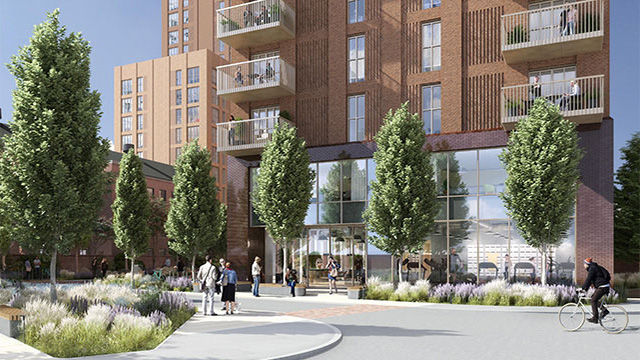Breach of planning control — Planning authority obtaining injunction enjoining defendants to remove structures — Injunction also requiring that appellants not place structure on their front or rear land — Whether “restraint” of breach of planning control purely negative — Whether structure complained of “incidental to enjoyment of dwellinghouse” — Appeal dismissed
In November 1992, the respondent council received a complaint that a 14-ft fibreglass fish had been fixed to the roof of a single-storey extension at 42 St Oswlad’s Road, London SW16, which was a semi-detached house in a quiet residential area. It was the home of both defendant appellants (“G”). The council refused retrospective planning consent for the fish and other replicas were put up. Enforcement notices were served by the council, who obtained an injunction to restrain G from putting a replica spitfire on their roof. G indicated that they would persist putting structures on their land and the council obtained an injunction which: (a) restrained the defendants from permitting any structural alterations or additions to the exterior of the building in breach of the requirement for planning permission requirements; and (b) required them to remove the spitfire from any open land or from the exterior of the building. The appellants contended, inter alia, that there was no jurisdiction under section 187(b) to grant a mandatory injunction — merely power to grant negative injunctions. Further, that the placing of the spitfire in the back garden was not “development” — rather it comprised “the use of any … land within the curtilage of a dwellinghouse … incidental to the enjoyment of the dwellinghouse as such”: see section 55(2)(d) of the Town and Country Planning Act 1990. The defendants appealed.
Held The appeal was dismissed.
1. It was argued that section 187(b) of the Act of 1990 applied where an injunction was considered necessary to “restrain” any actual or apprehended breach of planning control. That word, it was contended, was essentially negative and could not cover a mandatory injunction. But section 187(b) was drawn on the statutory assumption that an actual as well as an intended breach could be restrained by injunction. Therefore, the word “restrained” had to be given a wider and, in the context, a more natural meaning.
2. The seriousness of the grant of an interlocutory injunction depended on what was ordered to be done. A mandatory injunction to remove a vehicle which was blocking a right of way would not be serious at all. In the present case there was no objection to a mandatory injunction to remove the replica spitfire.
3. The defendants submitted that planning law was complicated. However, in the present case, the injunction was not completely general against infringing planning law; it was merely concerned with prohibiting future structural alterations or additions to the exterior of the house. That was not an aspect of planning law which presented any difficulty.
3. The case also concerned the phrase “enjoyment of the dwellinghouse as such”. G would no doubt derive great enjoyment from keeping a replica spitfire on the land because that would be “one in the eye” for the council. But that sort of personal pleasure, however exquisite, was not “enjoyment of the dwellinghouse as such”.
4. The concept of what was incidental to such enjoyment involved an element of reasonableness; it could not rest solely on the unrestrained whim of the occupier. No one could regard it as reasonable to keep a replica spitfire as “incidental to the enjoyment of the dwellinghouse”: see also Wallington v Secretary of State for the Environment for Wales [1991] 1 PLR 87, where it was held that keeping 44 dogs on private land was also unreasonable.
Ashley Underwood QC and Lisa Giovannetti (instructed by Amphlett Lissimore) appeared for the appellants; Robert Gray QC and Michael Druce (instructed by the solicitor to Croydon London Borough Council) appeared for the council.






